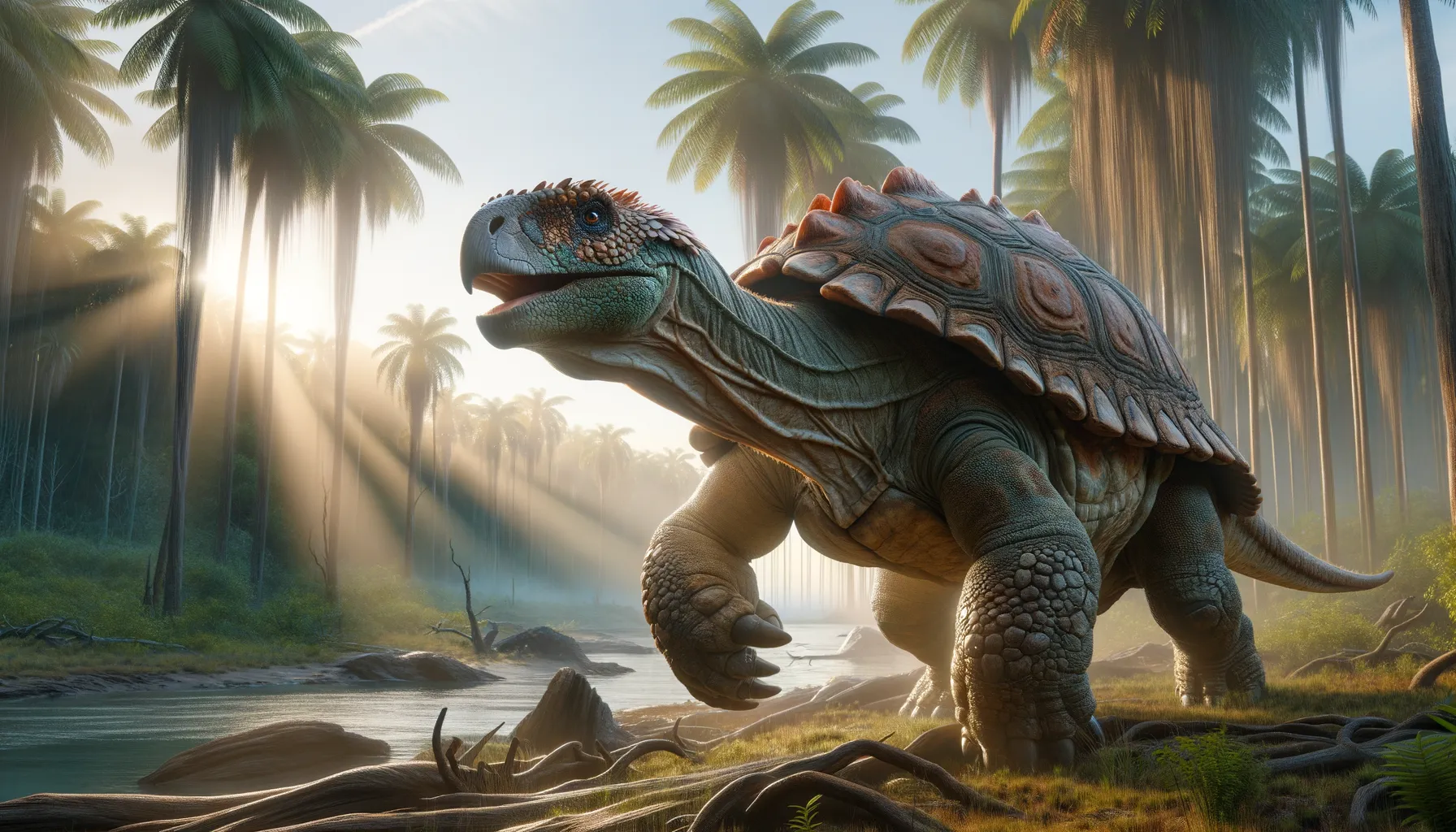
Anthodon
The armored guardian of the Jurassic age.
Period
Jurassic
Length
Measured roughly 4 meters in length.
Height
Stood about 1.5 meters tall.
Weight
Weighed around 300 to 400 kg.
Anthodon was a herbivorous dinosaur that roamed the Earth during the Late Jurassic period. Known for its robust body and turtle-like shell, it was well-adapted to fend off predators. Initially found in South Africa, Anthodon has intrigued paleontologists with its unique protective adaptations. The name means 'flower tooth', likely referencing its unique tooth shape which helped in herbivory. Its fossils provide insights into the diversity of dinosaur life in southern Pangaea.
Diet
Anthodon was a herbivore, primarily feeding on ferns, cycads, and other low-lying vegetation. Its teeth were adapted to grinding plant material, suggesting it efficiently processed a fibrous diet.
Hunting
As a herbivore, Anthodon did not hunt for food. Instead, it likely traveled in search of abundant vegetation, taking advantage of the lush Jurassic flora to sustain itself.
Environmental challenges
Living in a period with diverse predatory dinosaurs, Anthodon had to develop strong defensive features to survive. Its robust shell-like structure provided excellent protection against many predators. Climatic changes and shifts in plant distribution during its era might have influenced its habitat range and food availability.
Speed
Slow movement, adapted for defense.
Lifespan
Lived approximately 60-70 years.
First discovery
Discovered in South Africa in the 1850s.
Fun Facts
- Anthodon was not a dinosaur, but actually a prehistoric reptile that lived during the Permian period, over 250 million years ago.
- Although its name, Anthodon, means 'flower tooth,' this creature likely had quite the opposite—a strong set of teeth suitable for its herbivorous diet.
- Anthodon's fossils were first discovered in South Africa, making it part of the fascinating Karoo Supergroup which reveals much about ancient life on this part of the continent.
- Unlike the towering giants of the Jurassic and Cretaceous periods, Anthodon was relatively small, similar in size to a large lizard.
- Anthodon's body was shielded with bony plates, providing it with a strong defense mechanism against the predators of its time.
- This reptile belonged to a group known as pareiasaurs, known for their heavy bodies and sturdy, elephant-like feet.
- Anthodon’s features suggest that it was well-adapted to a terrestrial life, confidently roaming the prehistoric continents of Gondwana.
Growth and Development
Anthodon hatchlings would start small, but quickly grow to develop strong, protective armor. Their growth would involve significant energy devoted to shell formation, a characteristic trait for defense as they matured. Under favorable conditions, they were able to reach full size within a decade.
Habitat
Anthodon thrived in semi-arid regions with abundant plant life necessary for its herbivorous diet. Its strong limbs suggest it could traverse rough terrains found in prehistoric South Africa. The environment was characterized by seasonal changes, influencing the available food sources.
Interaction with other species
Anthodon likely lived alongside other herbivores, competing for similar food sources. Its main interactions with carnivorous dinosaurs would have been through natural predator-prey dynamics, relying on its protective adaptations to deter attacks. Socially, it may have been a solitary animal, only coming together with others of its kind for breeding purposes.
Natural lifespan
In suitable conditions, Anthodon could live up to 70 years.
Reproduction
Anthodon is believed to have laid eggs, like most dinosaurs. Nesting would likely occur in secure locations to protect the young from predators. Instances of parental care are unknown but would have improved juvenile survival chances if present.
Social behaviour
Anthodon might have been solitary or somewhat social, coming together for mating purposes. The species did not exhibit pack behavior, and individual survival would depend on effective use of its defensive adaptations. Communication might have involved vocalizations or visual signals during the mating season.
Fossil locations
Most Anthodon fossils have been found in South Africa, particularly in regions that were part of the ancient Gondwana supercontinent. These fossils have helped paleontologists understand the distribution of herbivorous dinosaurs in the southern hemisphere. The first significant fossils, leading to its identification, came from the Karoo basin.
